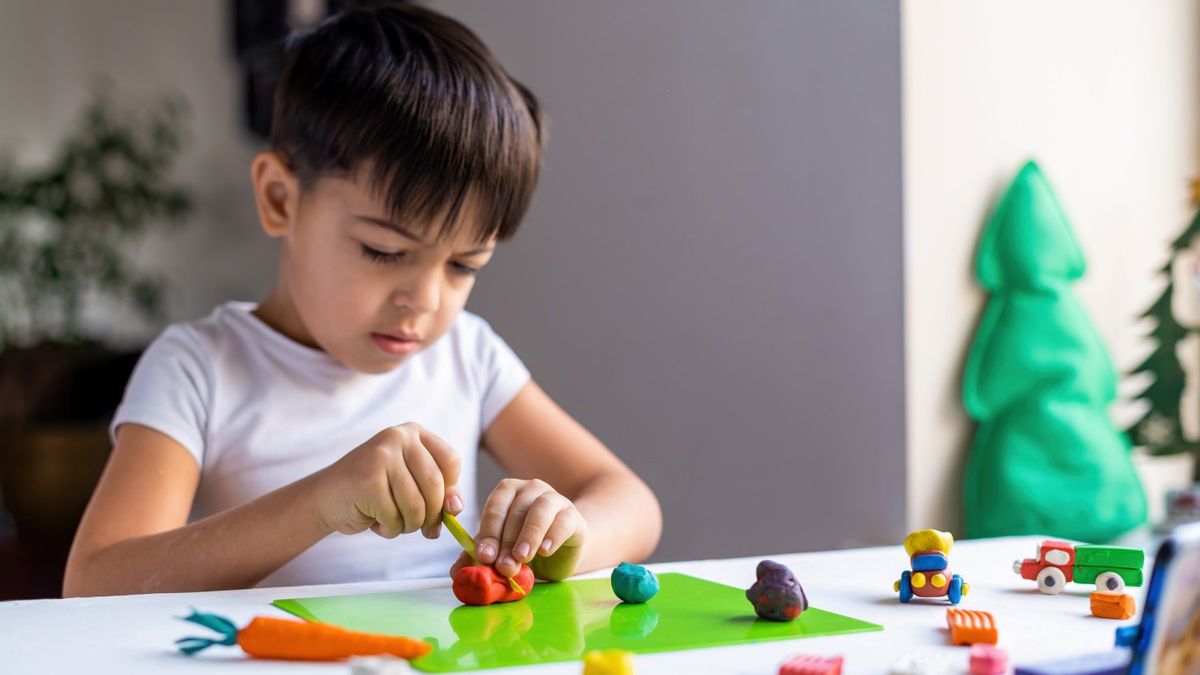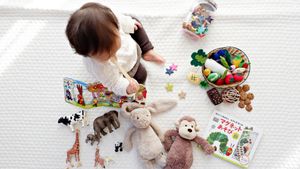YOGYAKARTA The sensory game to train sensoryism plays an important role in children's development. This exercise hones sensory skills, which stimulates responses related to vision, smell, hearing, touch, and taste.
The sensory game includes a fresh type of game involving one or more senses, especially the sense of touch. The role of training children's sensory, among others, is the following.
In simple terms, the process of extracting information from the vicinity is received from the senses so that it can be processed in such a way. This allows us to navigate and experience the world, including starting to need to be trained in children. With sensory exercise, a child can select accurate data from their senses. Otherwise, they can mishandle data organization.
Not only for children, even adults, who experience the neurodiverse, sensory exercise can help reduce anxiety and dispute as a whole. Launching Verywell Health, Monday, July 24, since the first day children were born, they are designed to explore the world through their senses.
That's why babies and toddlers touch everything and put objects in their mouths, and why children make funny sounds with their mouths and experiment with how the world sounds with their fingers. That's why your child is circling to the point of dizziness, falling, then getting up and doing it again.
Playing with various types of texture, taste, and objects helps children build new ways to talk about the world. Starting from recognizing water that makes wet clothes, pine smells, slippery soap bubbles, cold ice, to light that emits colors.
A sense of taste also builds language skills in children. He may not want a burger menu for dinner but chooses an apple that tastes sweet and fresh. Of course they will also choose a taste that is not bitter.
Rough motor skills include the ability to use and coordinate large muscle groups, for example to run and walk. Meanwhile, fine motor skills involve fine muscles for writing, tying shoes, enforcing clothes, and closing zippers.
Sensory games often involve the use and development of fine motoric skills by exploring games and objects with pinching,levant, and rope-binding movements.
You may have noticed that your child is calmer after shower time or that, after a very rough session jumping around the room, banging on furniture, crashing into a bed or pillow, your child looks more grounded. This type of sensory play can calm children because it helps them regulate internal discomfort, including boredom, legelisahan, or other types of agitation.
VOIR éGALEMENT:
Some people, when they think of sensory games, immediately imagine sand tables and water. Or children play with clay and toy dough, but this isn't all about touch. Sensory games are also about other senses. For example, the smell of sharp vinegar in science experiments, water color during color mixing experiments, or the texture and smell of gores painting is part of the appeal of your child's senses. Sensoric exploration is a way for children to check, find, categorize, and understand the world, and give them the opportunity to play sensoryly beneficial.
The English, Chinese, Japanese, Arabic, and French versions are automatically generated by the AI. So there may still be inaccuracies in translating, please always see Indonesian as our main language. (system supported by DigitalSiber.id)


















